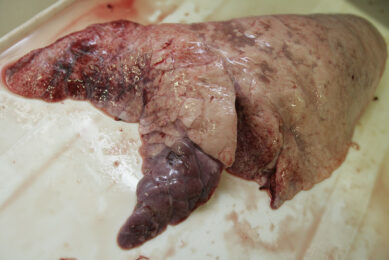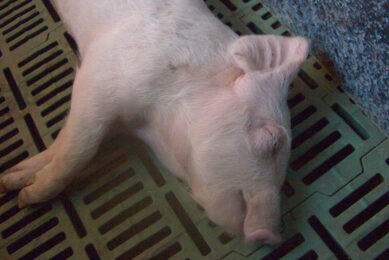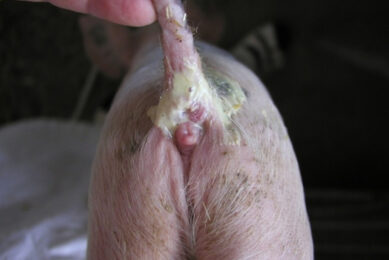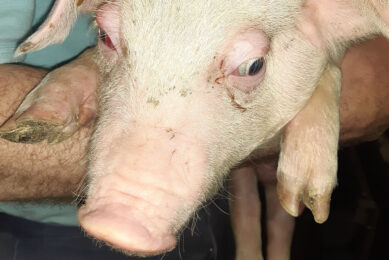Influenza causing reproductive failure
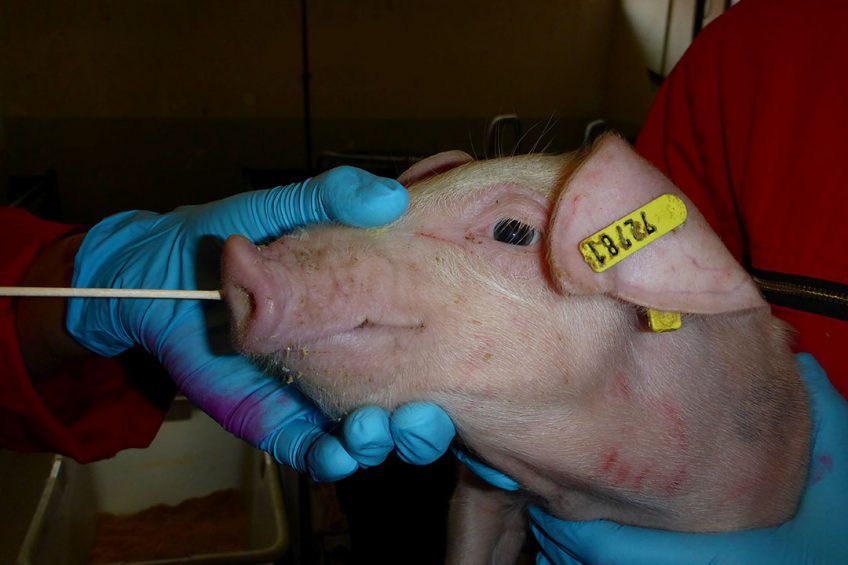
What do influenza and reproduction rates have in common? More than you might think. Sow reproductive performance is affected directly by influenza viruses – that is why better prevention against influenza improves sow herd performance.
Influenza A virus infection in pigs causes significant economic losses worldwide and is a potential threat to humans due to its zoonotic properties. As well as the three main subtypes H1N1, H1N2 and H3N2, the pandemic H1N1 (H1pdmN1pdm) has been widely distributed in the European pig population since 2009. Independently of the subtype, the disease can emerge both in a subclinical form, with no obvious clinical signs but reduced growth performance, as well as in an acute way, with high fever, sneezing, coughing, breathing difficulties and pigs going off feed.
No casual link
An effect on reproductive disorders, such as return to oestrus, abortion or small litters, is assumed, although a causal link could not be shown under experimental conditions. This can be explained by the fact that the clinical outcome of influenza infection is influenced by climatic and housing conditions, concurrent infections and the immune status of the animal. A recurrent form of influenza has also been frequently observed in recent years due to consistent reinfection of naïve animals.
Figure 1 – Clinical presentation in the 137 pandemic influenza positive farms before implementation of vaccination.
Detection and control
For direct detection of influenza either by polymerase chain reaction (PCR) or virus isolation, nasal swabs from live animals or trachea and lung tissue from dead animals have been most commonly used. However, newer approaches focus on alternative materials like nasal wipes, oropharyngeal swabs, oral fluids, surface wipes and sow udder skin wipes as well as environmental samples. Comparison of the different materials revealed that group samples (like oral fluids and udder skin wipes) and environmental samples have a higher chance of detecting positive samples by PCR compared to individual pooled samples (pooled nasal wipes). However, if the goal is to obtain a viral isolate by cell culture, individual samples (nasal swabs, nasal wipes, oropharyngeal swabs) should be preferred over group samples.
High sample size required
Infections with H1N1, H1N2 and H3N2 are comparatively easy to detect by PCR; however, for detection of pandemic H1N1 a high sample size is required. Antibodies in the blood can be detected from 7 days after infection by enzyme-linked immunosorbent assay (ELISA) or haemagglutination inhibition (HA) test, which is regarded as gold standard. The most reliable results can be obtained by the use of paired serum samples collected at an interval of 3 to 4 weeks. Interpretation of antibody titres can be challenging in a vaccinated herd or due to concurrent circulation of different subtypes in one herd. Conclusively the direct (PCR) and indirect (ELISA, HA) detection of influenza infection should be combined.
Currently licensed influenza vaccines in the EU are inactivated whole virus vaccines containing either 2 or 3 of the classical subtypes H1N1, H1N2 and H3N2 or the pandemic H1N1. Vaccination against influenza reduces clinical disease, virus shedding and transmission in infected animals.
Field study assessing reproductive performance
It is interesting to look at a very recent study by Sophie Gumbert and her team at the Clinic for Swine of the Ludwig-Maximilians University in Munich, Germany. This study investigated the effect of pandemic influenza A infection on reproductive performance parameters in 137 commercial sow herds in Germany before and after implementation of additional vaccination with an influenza vaccine containing the pandemic strain H1N1. Production parameters of the sow herds were recorded for six months before implementation of the vaccine and six months after completion of primary vaccination.
In total, 60,153 sows received two mass vaccinations at an interval of three weeks. The herd size of the farms ranged from 38 to 5,600 sows. Reduced reproductive performance was observed in almost 80% of the farms.
Figure 2 – Detection of pandemic influenza in the 137 study farms in the respective months, from 2011 until 2016.

Improvement of reproduction parameters
After vaccination the return to oestrus rate decreased in 74.8% of the farms with a mean reduction of 5.1%. Additionally, the abortion rate decreased significantly by an average of 1.8% in 57% of the farms, and the number of piglets born alive increased significantly in 70.4% of the farms by an average of 0.6 piglets. Analysis of the pre-weaning mortality rate resulted in a significant average reduction of 2.29% in 49.6% of the farms. Concurrently, an increase of an average of 1.98 piglets weaned/sow/year was observed in 77.1% of the farms.
Number of stillborn piglets
The only assessed parameter that was not significantly affected by vaccination was the number of stillborn piglets. Interestingly, infection with pandemic influenza took place throughout the year, which was also shown by previous studies. The number of piglets weaned/sow/year was significantly higher in farms that were already vaccinating against the 3 classical influenza subtypes compared to farms that did not vaccinate against classical influenza prior to the implementation of the pandemic influenza vaccination.
Thus, the results of the current study indicate improved conditions for piglet health in the farrowing unit when sows are vaccinated with both influenza vaccines.
By Julia Stadler, DVM, Dipl. ECPHM, Ludwig-Maximilians University of Munich, Germany





